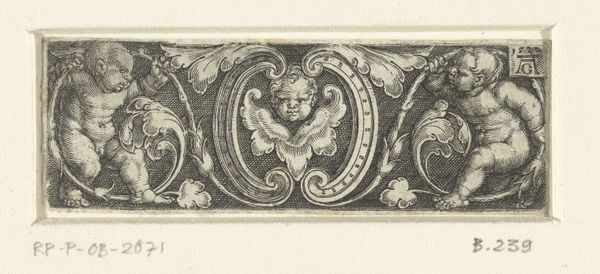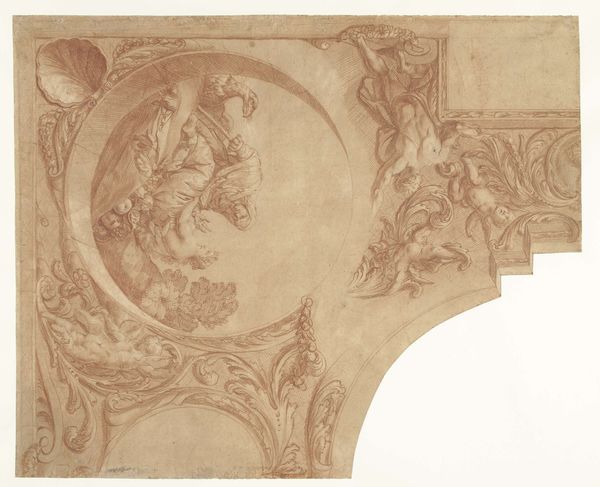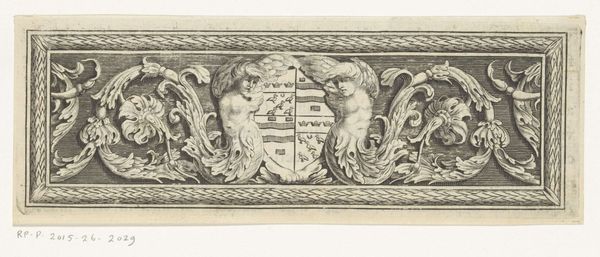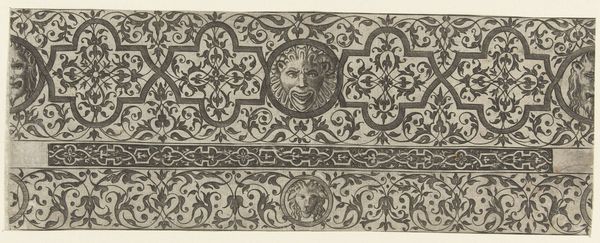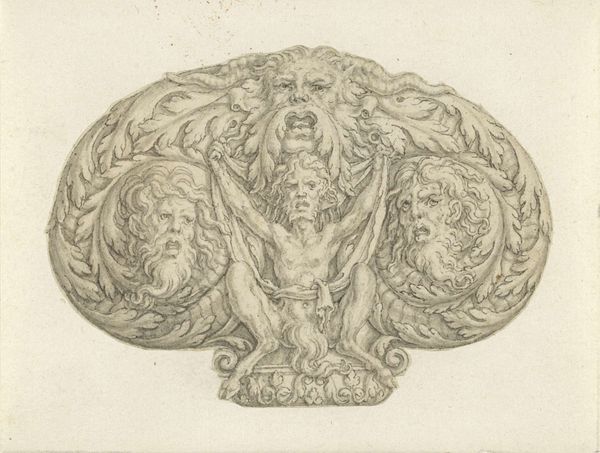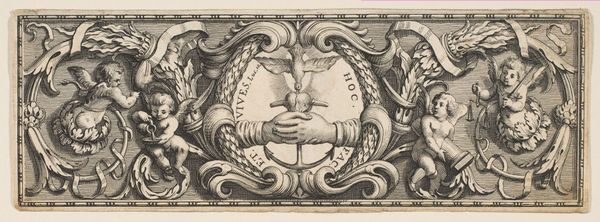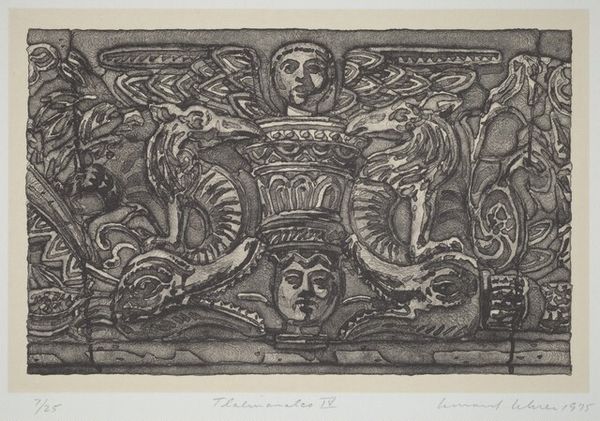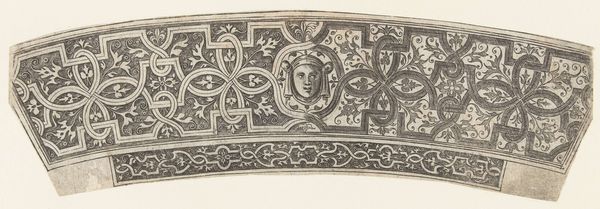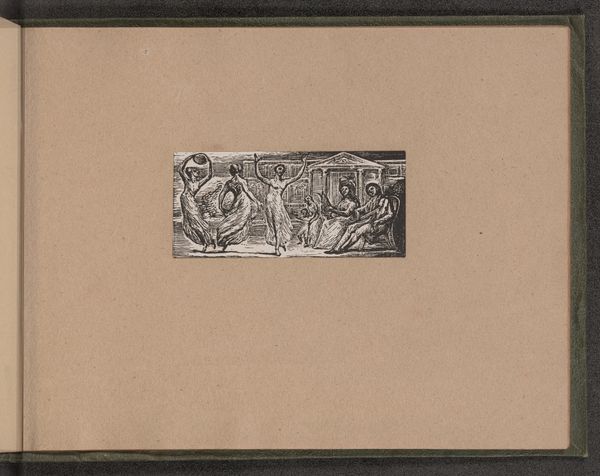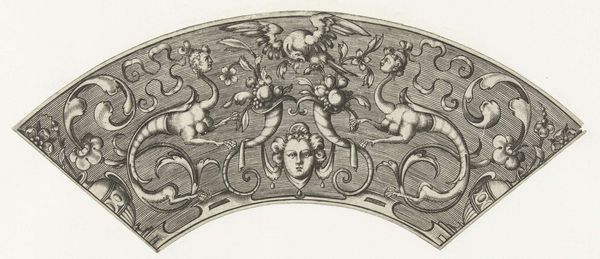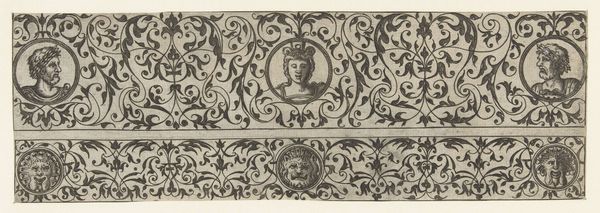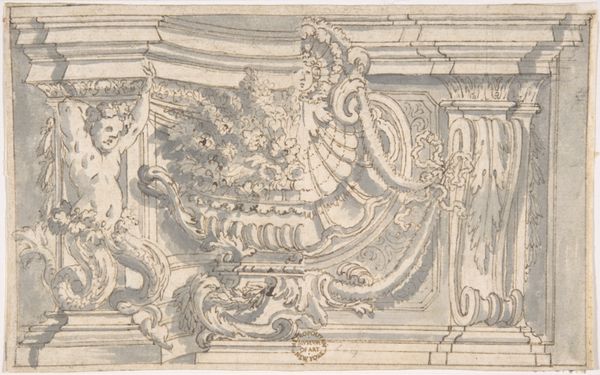
What Wreath for Lamia? What for Lycius? What for the Sage 1885 - 1888
0:00
0:00
drawing, coloured-pencil, tempera, print, gouache, ink
#
portrait
#
drawing
#
art-nouveau
#
coloured-pencil
#
ink painting
#
tempera
# print
#
gouache
#
ink
#
coloured pencil
#
symbolism
#
decorative-art
Dimensions: 105 × 376 mm
Copyright: Public Domain
Curator: This exquisite drawing by Will Hicok Low, dating from 1885-1888, is titled "What Wreath for Lamia? What for Lycius? What for the Sage". I'm struck by its elegant Art Nouveau style. Editor: It immediately reads as incredibly gendered, doesn't it? The title alone begs so many questions. And that visual framing—almost like classical coin portraits floating amidst ornate, decorative elements. Curator: Precisely. Observe how Low employs a limited palette, primarily in gouache, tempera, ink, and colored pencil to delineate each face and its framing device. This restraint invites us to focus on line and form. Note, in particular, the deliberate contrast between the textured background and smooth faces. Editor: This visual harmony works hard to gloss over what reads like the source text's issues, based on my understanding of Keats' poem and its male gaze towards Lamia as an allegory of female agency turned destructive due to constraints placed upon it by outside, male forces. Here, these faces—Lamia and Lycius, along with the almost anonymous sage—seem elevated almost beyond reach. Is Low endorsing their mythology, or questioning it through its re-presentation? Curator: The precise lines of each character's profile against their ornamental field draws the viewer in for an intricate visual puzzle. In terms of formalism, there's an incredible dynamism embedded in Low's symmetrical arrangement. It creates a kind of spatial harmony that invites sustained visual interrogation. Editor: Agreed—the composition is compelling, despite its subtle valorization of certain archetypes. It's in dialogue with fin-de-siècle tensions about the role of art—aesthetic appreciation versus social commentary—that still holds considerable meaning for modern viewers navigating issues of historical (and continuing) patriarchal norms and power. Curator: The rhythmic flow established by these sinuous lines contributes to a balanced tableau, further accentuating the symmetry, but that symmetry doesn't give the full picture; it requires us to unravel underlying ideas. Editor: Which reveals its inherent complexities, sparking new perspectives each time. Ultimately, this drawing captures its cultural period’s complicated gaze that might lead to modern reckonings.
Comments
No comments
Be the first to comment and join the conversation on the ultimate creative platform.
